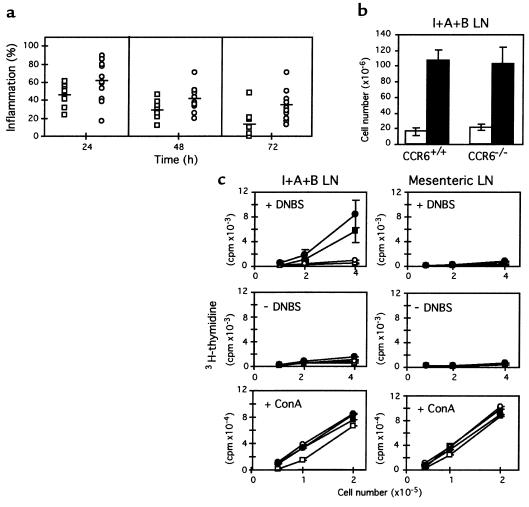Figure 5.
Altered response of CCR6–/– mice in contact hypersensitivity inflammation. (a) CCR6–/– (n = 12; circles) and CCR6+/+ (n = 12; squares) mice were sensitized by epicutaneous application of 25 μl of 0.5% DNFB solution on the shaved abdomen. Increases in ear swelling were measured 24, 48, and 72 hours after challenge with 20 μl of 0.2% DNFB on the ears. Individual data and the mean value for each group are presented. Two-tailed t-test values for DNFB data: P = 0.006 (24 hours), P = 0.005 (48 hours), P = 0.002 (72 hours). (b) Similar number of lymph node cells in CCR6+/+ and CCR6–/– mice. Animals were sensitized with DNFB (filled bars) or left untreated (open bars); 5 days later, lymphocytes from IAB (I+A+B) LNs were prepared and counted. (c) CCR6–/– lymphocytes proliferate in response to specific and nonspecific stimuli. CCR6–/– and CCR6+/+ animals were sensitized with DNFB (filled symbols) or untreated (open symbols); 5 days later, cells from draining (I+A+B) or control mesenteric LNs were recovered and cultured for 36 hours alone or in the presence of DNBS, as indicated. Cultures were pulsed with 3H-thymidine for 18 hours, and cell proliferation was estimated. Similar experiments were performed to measure in vitro responses to a polyclonal stimulus, Con A. Each value represents the average of three separate groups, consisting of pooled LNs from two mice. All assays were performed in triplicate.

